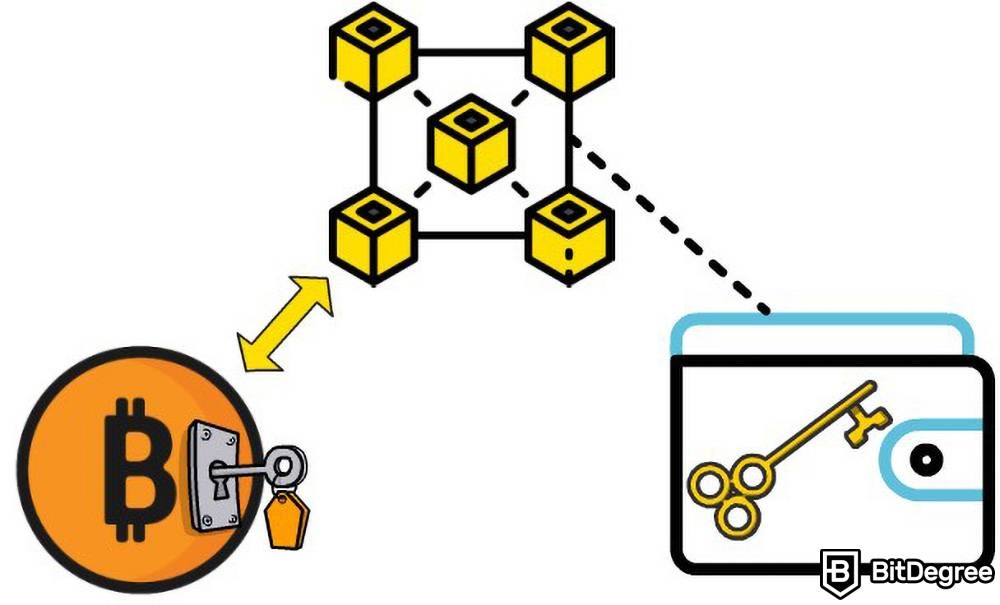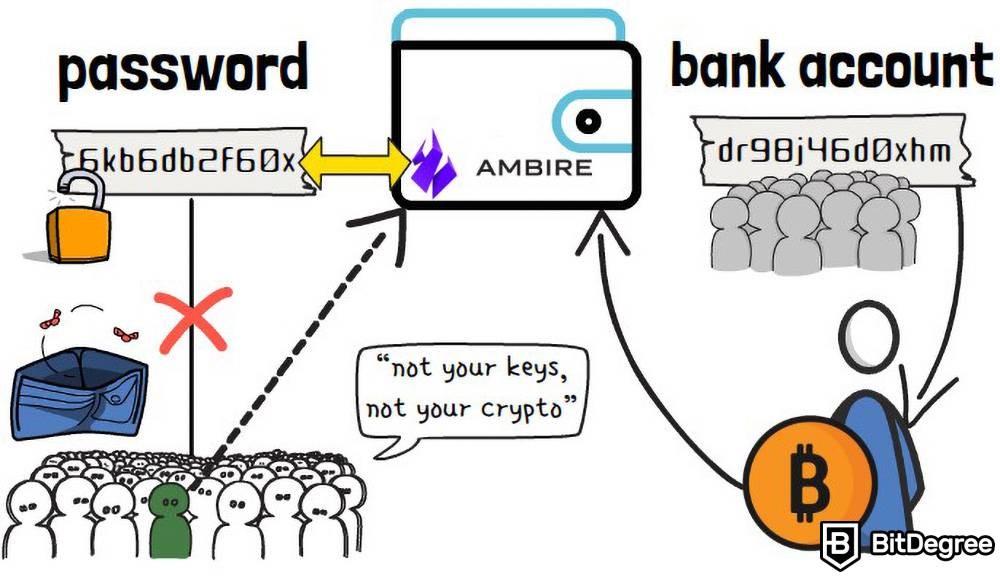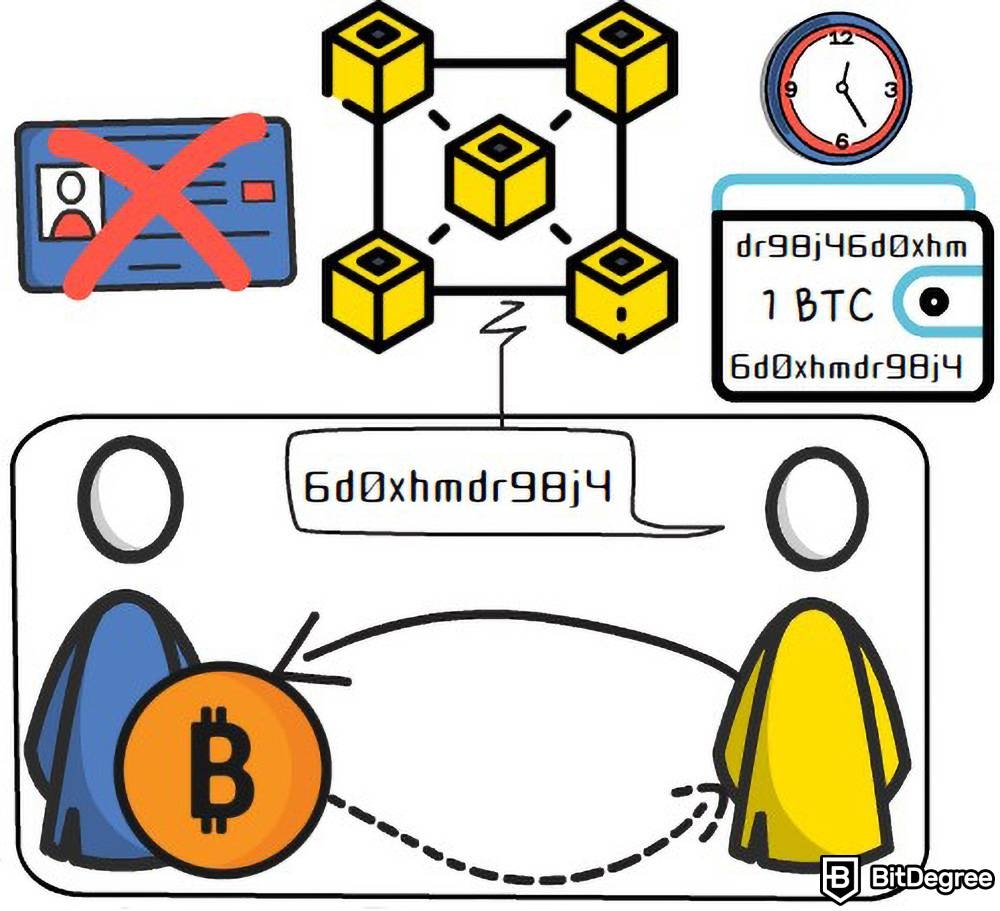4.1 What is a Crypto Wallet?
Stop overpaying - start transferring money with Ogvio. Sign up, invite friends & grab Rewards now! 🎁
In this section, I’m going to tell you what is a crypto wallet, and how it works!
When you’re just starting out with crypto, there are a few “essential” things that you need to figure out and understand, as soon as possible. One of these things has to do with cryptocurrency wallets - rather, what they are, how they work, and how you can start using them, as well.
It can be an intimidating topic to get into, simply due to how huge and expansive it truly is! Worry not, though - that’s what I’m here for, to tell you all about the different types of crypto wallets, and how they work.
In this section, we’re going to answer the question - what is a crypto wallet? I will tell you about the concept of wallets in the crypto industry, in general, and then we’ll get to the specifics - what is a crypto wallet used for, what are the crypto wallet types, which wallets are the best, and so on.
Do note, though, that this is an introductory section - we won’t go into the intricacies of crypto wallets, since that would take thousands of words to explain!
Now, then - let’s get to it!

Video Explainer
Video Explainer: What is a Crypto Wallet?
Reading is not your thing? Watch the "What is a Crypto Wallet?" video explainer
What is a Crypto Wallet? (Explained With Animation)


The Concept of Crypto Wallets
While concepts as vast as cryptocurrency wallets can feel really overwhelming, when you’re just getting into it, the golden rule is to start off from the very beginning, and work your way on from there.
So, what is a crypto wallet? As the term might imply, cryptocurrency wallets are special software or devices that allow you to store your cryptocurrencies within. They are used to both safe-keep your crypto, as well as a place where you could store your coins and tokens for longer periods of time.
Now, straight off the bat, let’s get something clear. Everyone will always say - “store your crypto in a wallet”. Technically, that’s not what happens - your cryptocurrencies are never stored INSIDE of your wallet. Instead, what your wallet actually houses are the private keys used to access those cryptocurrencies - the coins themselves are always located on the blockchain.

If you feel confused, think about it this way - imagine that you want to protect your physical, traditional money. You store it in a safe - one that has a digital lock that can be accessed by entering the right combination of numbers. Now, you write that combination down, on a slip of paper, and put it in your wallet.
Do you carry that money around with you? No - it’s stored within the safe! All that you carry is the piece of paper with the number combination required to access the safe. The same is true with cryptocurrency wallets, as well!
This is why all wallets - no matter their type - have two special number and letter combinations associated with them - a private key, and a public key. Your private keys are like your password - as the term implies, they’re completely private, and should never be shared with anyone - if people found out your private keys, they could steal your cryptocurrencies very easily!

This is where the expression “not your keys, not your crypto” comes from, as well. Many wallet providers offer crypto storage services to their clients, but in reality, and at the end of the day, those companies hold your private keys for you. So, if anything bad would happen, you wouldn’t have the ability to recover your lost funds!
A public key is different. It’s like your international bank account number - you would give it to another person, and they’d be able to send you some cryptocurrencies!
Imagine that you borrowed some money from your friend, and now want to give it back. Your friend requests that you send them the equivalent amount in Bitcoin - fair enough!
Once you receive the friend’s public key, you’ll be able to make that transaction, from your own wallet. This transaction will be easily provable, too, since it will be recorded on the blockchain, where anyone will be able to view it, at any point in time. Of course, they wouldn’t see your name - the only information attached would be the two wallet addresses, the amount sent, and the point in time when the transaction took place.

Now, do keep in mind that not all crypto wallets can store any cryptocurrency. Some wallets are coin- or token-specific (meaning, you can only store that one, particular asset on them), while others offer support for hundreds of different cryptocurrencies. As time goes on, though, multiple asset-supporting wallets are becoming the norm, more and more.
Hot VS Cold Wallets
Moving on, another form of a question that you might come across while studying crypto wallets would sound something like this: “what is a cold wallet in crypto?”, or "what are the different types of crypto wallets?”.
Yes, cryptocurrency wallets have types. Thankfully, it’s nothing overly complicated!

Figuring out what is a crypto wallet involves understanding that there are two major wallet types - hot, and cold wallets. These odd-sounding names reference internet connectivity - a “hot” wallet is one that maintains a constant connection to the internet, while “cold” wallets are usually hardware devices that can be unplugged from your computer, and that don’t need to be connected to the internet 24/7.
These two different types of crypto wallets are then segmented into smaller subtypes - hot wallets include web browser-based wallets, dedicated software programs, or even crypto exchange account wallets, too. On the flip side, cold wallets are mostly hardware devices - there are also paper wallets, but these are very niche, and I won’t get into them too much now.
How do all of these crypto wallets work? Well, the premise is practically the same, actually - no matter what type of a wallet it is that you’re using, they will all have private and public keys, so the underlying functionality remains very similar.
Now, the debate of hot VS cold wallets has been present since the dawn of time - people have always tried to find a consensus of which one is a better option, overall. While this is a debate that requires to be discussed in more detail, let me just say - both of these different types of crypto wallets have their own pros and cons that are worth considering!
Wallet “Best Practices”
Speaking of pros and cons, now that you know what is a crypto wallet, and how crypto wallets work, general functionality-wise, we should also talk about some of the most important “best practices” that you need to be aware of, no matter which type of a wallet it is that you decide to use!

First of all, it’s advisable that you have at least two wallets - one cold, and one hot. Your cold wallet would be a hardware device where you’d store the bulk of your crypto portfolio. The hot wallet could be exchange-based - here, you’d keep a smaller amount of crypto, designated for trading and other usage purposes.
Now, of course, you can have as many wallets as you want - however, the combination that I’ve just mentioned is time-tested, and works for most people!
Moving on, as you begin to understand what is a crypto hardware wallet, you should also put in the conscious effort to not showcase your wallet in a public setting. Some hardware crypto wallets feature a pretty unassuming design - they might look like, say, USB sticks.
Still, though, you should never take your wallet out in a public setting, if you don’t need to. If some potential thieves notice it, and they’re aware of what that device is, you could find yourself in some trouble!
On the flip side, hot wallets have some safety precautions attached to them, as well. In an ideal scenario, you would log into your crypto exchange, as well as use your hot wallets on a device that’s specifically designated for those purposes. While it’s certainly not a common scenario, a separate device like this would minimize the risk of you getting a virus or a keylogger, and having to one day log into your wallet, only to see it emptied, with your crypto assets nowhere to be found.
Not necessarily a common scenario, but it does happen!

Lastly, you should note that there are no bullet-proof wallets out there - whether it be a hot wallet, or a hardware device, there’s always the risk of your asset security being compromised, and them getting stolen. In order to protect your crypto, you should look into using multiple wallets, and keeping small amounts of coins and tokens on each one. At the very least, you should use a hardware wallet!
That wraps up my introduction to what is a crypto wallet, their types, and how do these wallets work. Check out other sections of this chapter to learn even more about crypto wallets.










